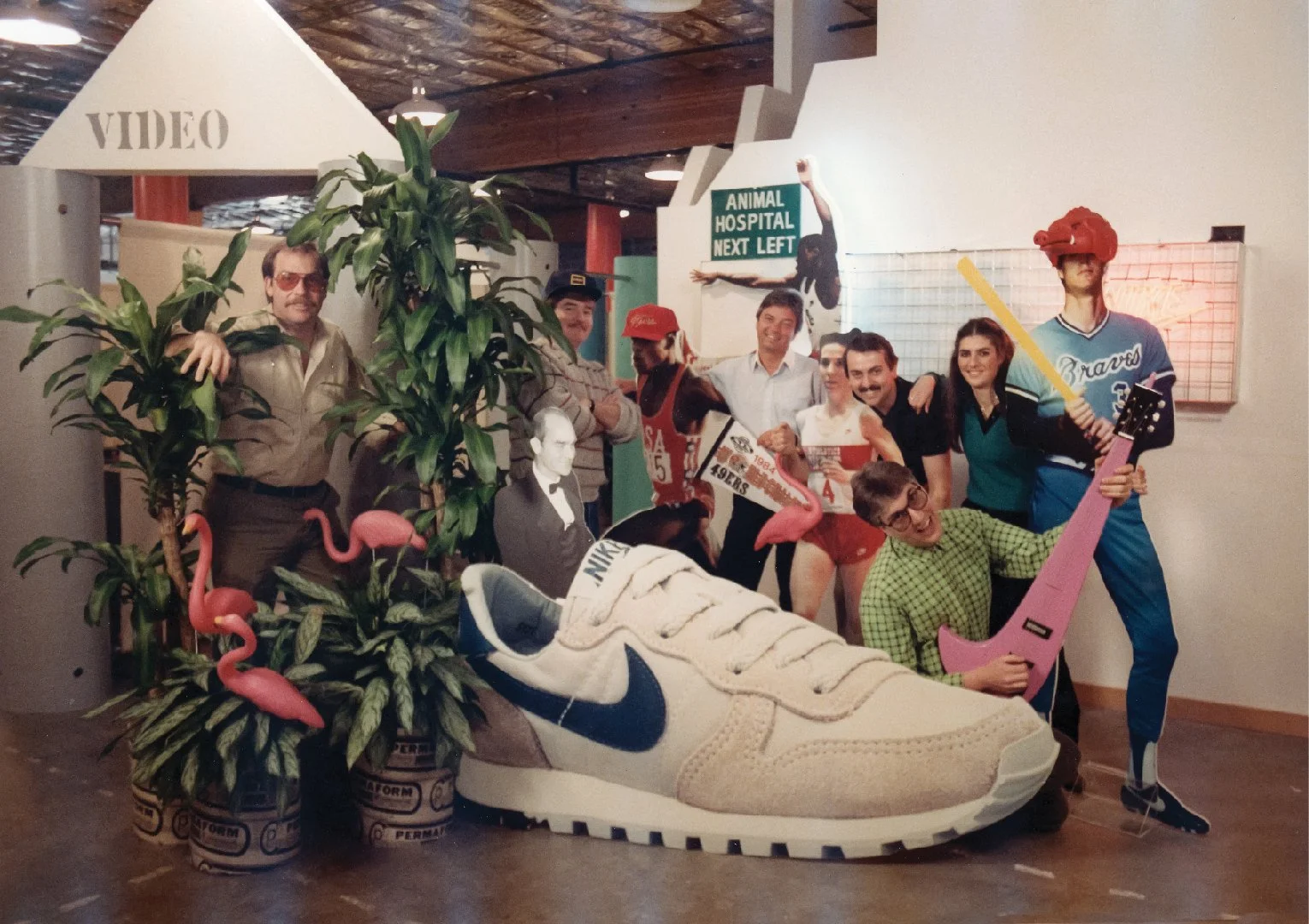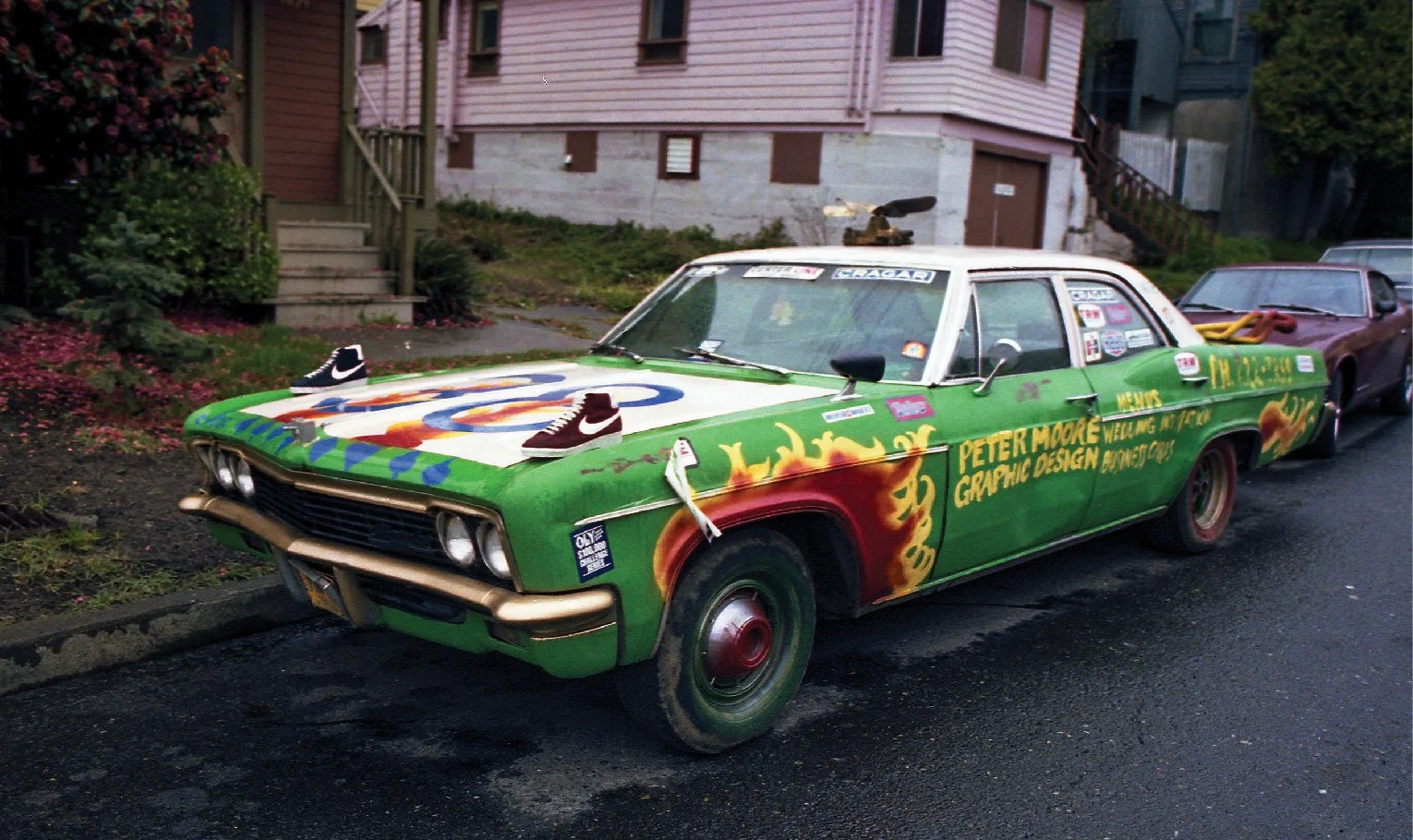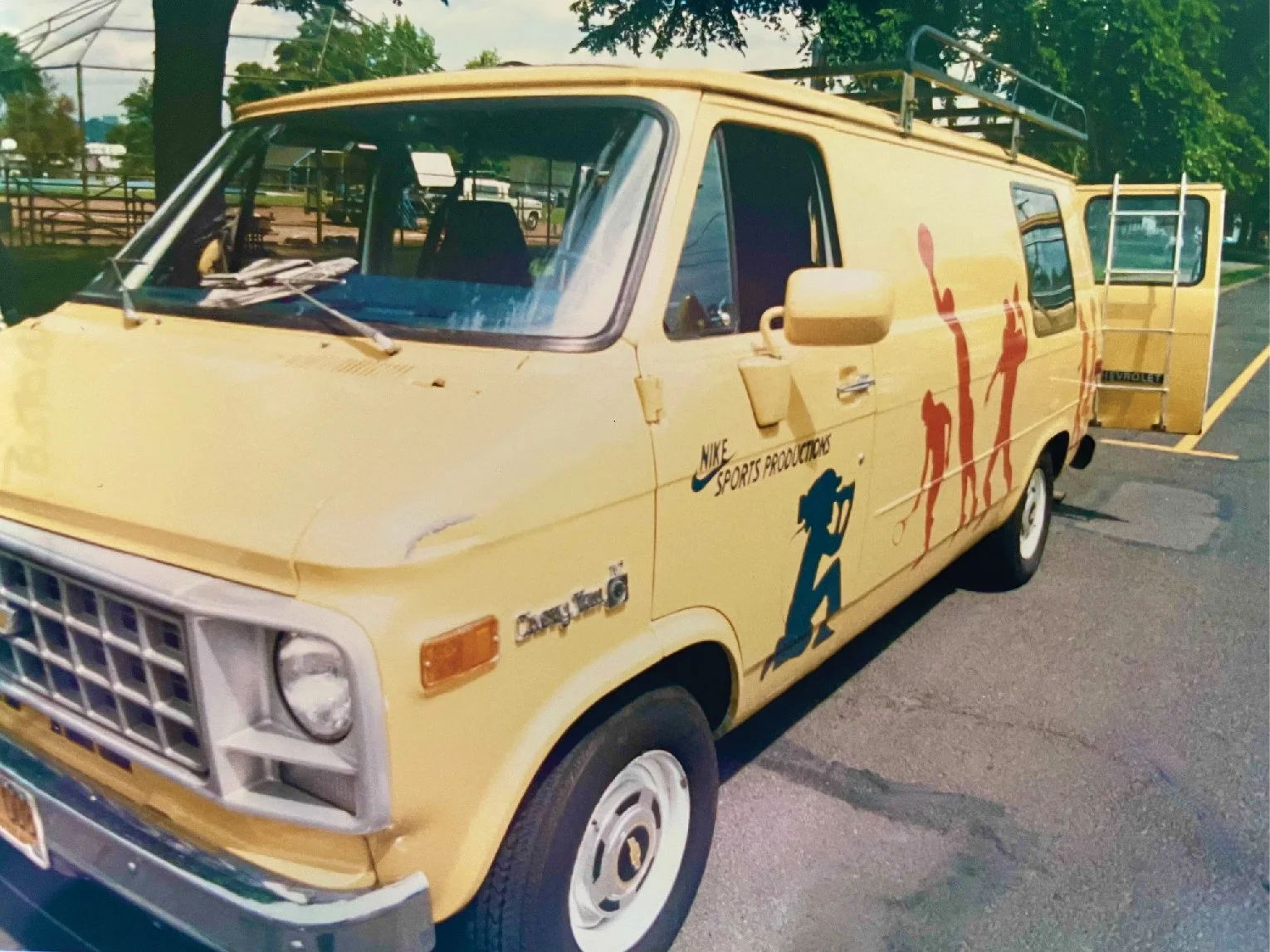DO I NEED ONE OF YOU? The Start of Nike Design.
The Nike Design Office.
“Do I need one of you?”
This was the pivotal question Rob Strasser, then VP of Marketing for Nike, asked Peter Moore that launched Nike Design. It was the start of the 1980s and Nike was just getting off the ground. Peter had been doing work for Nike from his design business Peter Moore Graphic Design, including a few early posters and some catalog work when he found himself in a meeting with Rob. Once Peter explained to Rob everything a graphic designer does for a brand, and how it was different from what most ad agencies would do, Rob was convinced he did indeed need one. Both Rob and Peter believed in the power of brand building and that everything in the company, design, marketing, even sales, should contribute to building the brand or it was unnecessary. The two formed a partnership around this vision that would launch Nike, later revive adidas and eventually achieve industry icon status for both.
As his relationship with Nike and Rob grew, so did the workload, and eventually Peter came to work for Nike as Global Creative Director… and Nike Design was off and running. Peter describes the transition in this excerpt from the book “Peter Moore: Sneaker Legend.”
“By 1982, Nike was growing so fast it had become all-consuming and pretty much swallowed up my business, so Peter Moore Graphic Design became Nike Design. We worked 24/7 just to keep up, and I was kind of overwhelmed by how fast it all happened.
The Peter Moore Graphic Design Mobile outside the office on Water Ave.
I think I had always imagined myself at a drafting table with maybe just one other designer and another to pick up the phone, but that was all. But more work didn’t mean more money, so when our needs and Nike’s became the same thing, I accepted an offer from Nike to buy the business and become creative director.
Our work remained the same: the design and production of all of Nike’s brand materials, from logos, posters, catalogs, and packaging to brand manuals, annual reports, and event displays—the whole kit and caboodle. At first, we stayed in the same office, a small house on S.W. Water Avenue in Portland to which we’d moved in 1980. People would be shocked if they knew where Nike Design started. It was about as far as you could get from a high-tech, hip, creative environment. It was next to a swamp, and we had a goat for a neighbor that lived on the porch of the house opposite. It got so cold in winter that we had to wear coats inside. And in summer, it was so hot that we had to make sure we didn’t drip sweat on whatever we were working on. I loved that house.
Peter Moore Graphic Design on SW Water Ave. in Portland, Oregon
But as the workload increased and we had to start hiring more designers, the house got cramped, so we moved and created Nike’s first creative workspace. The idea was that it was totally open plan and broke down the idea of offices and walls. It was noisy and there was little privacy, but it got people talking to each other about their ideas—a concept that would become a Nike trademark. As Nike Design grew, we also started to do advertising, video production, trade shows, and space planning—anything to do with the visual element of the brand. Everything had to tie back to the three things that had built Nike: sport, performance, and innovation. It had to be authentic and had to perform.
Nike was still trying a lot of different things: golf, women’s lines, and even bowling, for Christ’s sake. So there was the opportunity as a designer to try new things. Some ideas pushed the boundaries of the brand. The first women’s catalog was the first time Nike tried to speak to women in terms that would matter to them. It was a beautiful, almost sensual look. In a way, it may have gone too far, but it dramatically shifted the way Nike spoke to women.
Some ideas were really out there, and some definitely bombed. There was this aquarium display, for example, designed to show how waterproof our hiking boots were. It was a real aquarium, big and clunky. I mean, who would ever want it in a store? On top of that, the boots leaked. But even though some ideas were crazy, it was part of breaking the rules, and pushing and trying new things. And, for the most part, I think we succeeded in building an image that set the brand apart and marked a turning point in the company—a recognition that design mattered and was no longer something you could choose not to do.”
The original Nike Design van.
The silhouette that sells. A mock model card of Peter Moore.
Those early days at Nike Design were long, chaotic, fast paced… and fun. The work was never ending and always on an impossible deadline, yet they created the work that helped build an iconic brand. The original offices in a nondescript building across from Portland’s old Civic Stadium served as a creative crucible for Nike. Far enough from HQ to avoid meddling, but close enough to stay tapped into the soul of the brand. It was filled with driven and passionate creatives, willing to put in the effort and push the envelope, and they were able to produce some incredible work, both in quality and quantity. From Air Jordan and Nike Air, to signature lines for John McEnroe and Dwight Gooden, to collectable posters and memorable commercials, they did it all. Early designers like Ron Dumas and Steve Sandstrom, photographers and video production people like Roger Thompson, Michael Doherty, and Les Badden, and even a young Tinker Hatfield spent time in that building. This group of creatives was charged with creating, building and caretaking the Nike brand that became an industry juggernaut. It starts with the brand… always.




